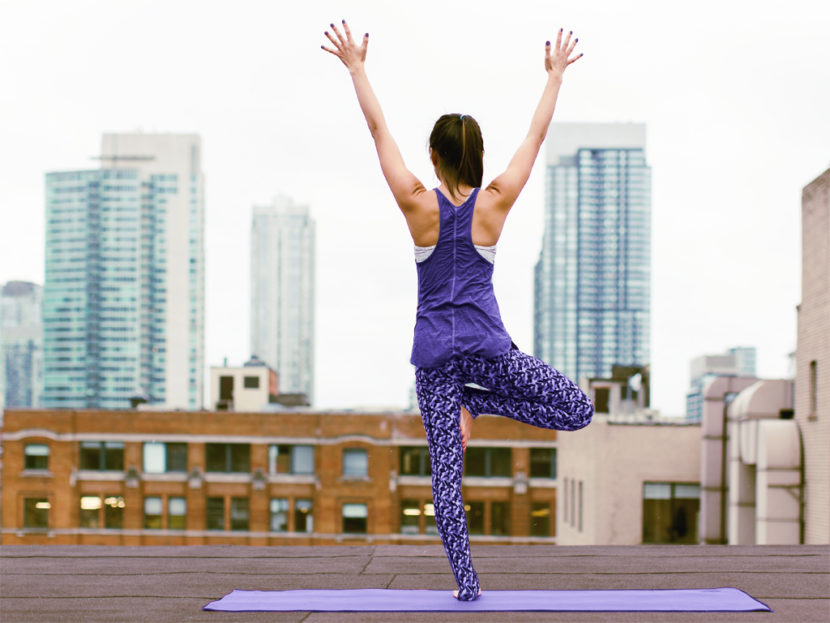
Every couple of years a new exercise, program or piece of equipment — that initially looks odd or strange — becomes a new norm for fitness enthusiasts.
Take the foam roller, for example. When the National Academy of Sports Medicine (NASM) explained how it could be an important tool to improve range of motion and movement in the early 2000s, the only people who used them initially were NASM Certified Personal Trainers and their clients. Fast-forward 10 years later, and foam rollers are found in most fitness facilities. Many people use them as a tool in their fitness routines, warm-ups, cool-downs and/or on recovery days.
The next exercise to have a similar impact on the fitness industry is breathing drills. Just as the foam roller helped people move and feel better, breathing exercises have a similar impact.
Breathing is important as you obviously need it for survival. However, because we don’t have to focus on it, many people don’t realize how much of an impact that it has on the human body. If you want an example, the average person takes around 20,000 breaths per day. If breathing is altered, the faulty movement pattern will be repeated far more times than a squat, bicep curl or other favorite exercise where 2 to 3 sets of 8 to 20 reps are used. And doing 16 to 60 subpar reps a couple times per week is nothing compared to 20,000 altered breaths per day, every day.
Due to stress, most people demonstrate dysfunctional breathing patterns. A study from the International Journal of Sports Physical Therapy states that 50 to 80 percent of the population has some level of dysfunctional breathing. This can actually increase the rate of injury as poor breathing can be linked to low-back pain, neck pain, anxiety, depression and even orthopedic injuries like ACL tears.[1]
Poor breathing has a negative effect on recovery as well as digestion. If a person has altered breathing patterns, it can cause them to be in a sympathetic (fight or flight) state during most of the day. While this can be beneficial during exercise, away from the gym a parasympathetic (rest and digest) state is more beneficial. When a person is in the sympathetic state more than they should be, digestion and sleep are compromised because the body perceives a threat and is on high alert. This reduces the immune system’s ability to manage inflammation, limits soft-tissue building/toning, and degrades connective tissue like tendons and ligaments.[2] In addition, this stressed state causes poor sleep habits and similar health issues because they have a hard time “turning off.”[2] Unfortunately, these issues make it harder for a person to recover from exercise and get the results they are looking for in the gym.
How can you determine if you have dysfunctional breathing patterns? Below are 2 simple tests that you can do.[3]
- Sit in a comfortable upright position and focus on good posture (ears, shoulders and hips in a straight line). Take a stopwatch and set the timer for 1 minute, and count how many breaths you take. Ideally, you should be at 12 or fewer breaths per minute without having to think about altering your breathing pattern.
- In that same seated position, breathe in through your nose and exhale through your mouth. Once youcan no longer get any air out on the exhale, use a stopwatch and see if you can hold your breath for 10 seconds or more.
If you were unable to meet the goal on one of those 2 tests, try one or more of the 4 exercises listed below. Even if you passed the 2 tests, these exercises are extremely valuable as they will help get your body in proper orthopedic position prior to exercise so you can move better as well as improve your recovery after exercise. Best of all, they only take a few minutes to do, can be done anywhere (home, gym, the office, etc.), and are great for reducing stress during the day. If you need additional help with these exercises, find a Life Time professional who has gone through the LT Method Certification Course.[4]
1. WALL BREATHING

- Stand with your back against a wall and feet hip width apart and 10 to 12 inches from the wall.
- Posteriorly tilt the pelvis to flatten the lower back against the wall.
- Reach forward maximally with both hands, allowing the upper back to round forward.
- Try to extend the reach on each exhale while sensing the abdominal muscles engaging.
- Try to keep the ribs pulled up into the exhaled position throughout the exercise.
- Hold this position for 3 to 5 breaths and then relax.
Repeat and perform 3 to 5 repetitions.
2. QUADRUPED BREATHING

- Position yourself on all four on the floor.
- Hands should be directly below the shoulders and knees directly below the hips.
- Head should rest in a neutral position with the ear in line with shoulders in line with hips.
- Push long through the arms as if to push away from the floor until you feel a stretch between the shoulder blades.
- Posteriorly tilt the pelvis to round the lower back slightly.
- As you exhale, push away from the floor.
- Try to keep the ribs pulled up into the exhaled position throughout the exercise.
- Hold this position as you take 3 to 5 full breaths in through the nose and out through the mouth.
- Relax and breathe normally for a few seconds.
Repeat and perform 3 to 5 repetitions.
3. BEAR BREATHING

- Position yourself on all four on the floor.
- Dorsiflex the ankle (extension of the foot at your ankle) to place the ball of the foot on the floor.
- Hands should be directly below the shoulders, and knees should be directly below the hips.
- Head should rest in a neutral position with the ear in line with shoulders in line with hips.
- Push long through the arms as if to push away from the floor until you feel a stretch between the shoulder blades.
- Posteriorly tilt the pelvis to round the lower back slightly.
- Bring knees off the floor until shins are horizontal to the floor.
- As you exhale, push away from the floor.
- Try to keep the ribs pulled up into the exhaled position throughout the exercise.
- Hold this position as you take 3 to 5 full breaths in through the nose and out through the mouth.
- Relax and breathe normally for a few seconds.
Repeat and perform 3 to 5 repetitions.
4. SUPINE BREATHING
- Lie down on your back.
- Push through your heels so your vertebrae and pelvis are flat on the floor. For most people, it helps to roll up a towel or yoga mat (anything that lifts your feet 1 to 2 inches) to place your feet on.
- Place your index fingers on the lowest ribs and your other 3 fingers on the top of your abdominal muscles.
- Inhale through your nose, feeling the sides of your ribs expand.
- Exhale through pursed lips, feeling your ribs and stomach coming down towards the floor.
- Hold this position for 3 to 5 breaths and relax.
Repeat and perform 3 to 5 repetitions.
Even if you don’t have breathing issues (around 1/4 of the population doesn’t), give some of these exercises a try and see how you feel before, during and after exercise, as well as at different times of the day when you feel stressed. You might be pleasantly surprised by the results, and you’ll have some new exercises that you put into your routine going forward!
In health, Corey Grenz — Program Specialist and Master Trainer — Life Time, Chanhassen
This article is not intended for the treatment or prevention of disease, nor as a substitute for medical treatment, nor as an alternative to medical advice. Use of recommendations in this and other articles is at the choice and risk of the reader.
- Kiesel K, Rhodes T, Mueller J, Waniginger A, Butler R. Development of a Screening Protocol to Identify Individuals With Dysfunctional Breathing. The International Journal of Sports Physical Therapy. Volume 12. Number 5. October 2017.
- Jamieson, J. Breathing Strategies For Better Performance and Recovery With Bill Harmann and Mike Robertson. https://www.8weeksout.com/2018/02/14/breathing-strategies-for-recovery/
- Hartmann, B. All Gain, No Pain. Personal Record Press. 2017.
- LT Method Manual.


